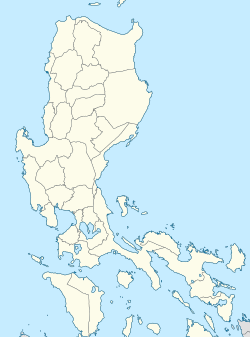| Namacpacan Church | |
|---|---|
| |
 Church facade in 2020 | |
Location in Luzon | |
| 16°51′12″N120°22′35″E / 16.853333°N 120.376389°E | |
| Location | Brgy. Victoria, Luna |
| Country | Philippines |
| Denomination | Roman Catholic |
| History | |
| Former name(s) | Luna Church |
| Status | Parish church |
| Founded | 1690 |
| Dedication | Saint Catherine of Alexandria |
| Architecture | |
| Functional status | Active |
| Heritage designation | National Cultural Treasure |
| Architectural type | Church building |
| Style | Earthquake Baroque |
| Administration | |
| Province | Lingayen-Dagupan |
| Archdiocese | Lingayen-Dagupan |
| Diocese | San Fernando de La Union |
| Clergy | |
| Archbishop | Socrates B. Villegas |
| Bishop(s) | Daniel O. Presto |
Saint Catherine of Alexandria Parish Church, also known as the Shrine of Our Lady of Namacpacan and Namacpacan Church, is a Roman Catholic church located in Luna (formerly Namacpacan), La Union, Philippines under the jurisdiction of the Diocese of San Fernando de La Union. Once called Luna Church, its titular is Saint Catherine of Alexandria. Built in 1690, it is also known as the shrine for the image of Our Lady of the Immaculate Conception of Namacpacan.
Contents
- History
- Architecture
- Marian devotion and veneration
- History 2
- Alleged miracles
- Notes
- Bibliography
- External links
The church was declared a National Cultural Treasure by the National Museum of the Philippines.





